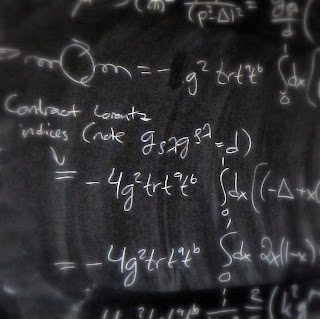At age fourteen, I came across Arthur Eddington's work The Nature of the Physical Universe. I was excited with the notion that a table is in fact not a solid piece of furniture. If one could possibly look closely enough, said Eddington, beyond the power of any type of microscopic lense, one would certainly observe that it is comprised of atoms so tiny that we can hardly grasp their tinyness. These atoms consequently are comprised of in fact, tinier nuclei, and these consequently are comprised of particles called neutrons and protons, with tiny electrons zooming about in orbits like miniature solar systems. "So that is what the world is made of!" I presumed, and this was my intro to physics. Of course it didn't occur to me then to question exactly what these electrons, protons and neutrons are comprised of.
Some years afterwards, as a Harvard graduate student, I was fortunate enough to attend a three-year lecture series by Julian Schwinger. The timing was perfect. Schwinger's advancement of Quantum Field Theory (QFT) had progressed and he was about to publish a magnum opus, "A theory of the fundamental interactions". I sat enthralled, as did others.
"As Schwinger stood at the blackboard, writing ambidextrously and speaking mellifluously in well-formed sentences, it was as if God Himself was handing down the Ten Commandments. The equations were so elegant that it seemed the world couldn't be built any other way. From the barest of first principles, he derived all of QFT, even including gravity. Not only was the mathematics elegant, but the philosophic concept of a world made of properties of space seemed to me much more satisfying than Eddington's mysterious particles. I was amazed and delighted to see how all the paradoxes of relativity theory and quantum mechanics that I had earlier found so baffling disappeared or were resolved." - Rodney Brooks
In the FIFTY years that had passed since my university student days, I have seen very little mention of QFT. Rather I have seen a barrage of publications and posts that keep restating the paradoxes that individuals are expected to accept. Far from giving the public a comprehension of nature, these popular books and posts have actually brought confusion and incomprehensibility.
The objective of my book, Fields of Color, is to bring to the public the exact same feeling of satisfaction that I felt in Schwinger's courses. I am also trying to resolve the paradoxes of physics that stop countless people from understanding the natural world. I hope that my endeavours will bear fruit and that the reader will come away from the book feeling that nature is not mysterious or paradoxical, but is understandable and indeed makes perfect sense. Read more at the Book's Website

No comments:
Post a Comment